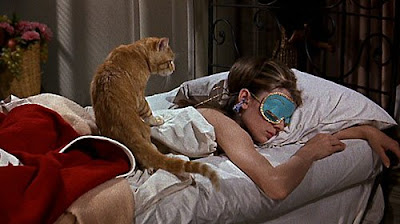












 This is one of my all time favorite British Vogue Covers. I love the colors and the lighting. Its just perfect. This is a few years old but I still think American Vogue could stand to take note. The UK book always steals the show.
This is one of my all time favorite British Vogue Covers. I love the colors and the lighting. Its just perfect. This is a few years old but I still think American Vogue could stand to take note. The UK book always steals the show.



 This model, actress, activist and mother of two young children knows a thing or two about multitasking. "Whether it's the foundation's needs or a speech I have to give or modeling, things get done according to priority. Sometimes I feel I should get more organized, but then I think, Why fight it? This is my system: Just do what needs to be done next."
This model, actress, activist and mother of two young children knows a thing or two about multitasking. "Whether it's the foundation's needs or a speech I have to give or modeling, things get done according to priority. Sometimes I feel I should get more organized, but then I think, Why fight it? This is my system: Just do what needs to be done next."
When you created the classic wrap dress in 1972, were you seeking to design an emblematic look for career women emerging from the hippie scene?
I was so young at the time and so inexperienced that it really didn't happen like that. I wanted very much to be independent and to work. I was working in Italy as an intern for a man who had all these factories. And I had a boyfriend in New York City; we got engaged and I got pregnant and before I knew it, I needed to move to America and get married. I said, "No, I need to be an independent woman." And I asked the man I was working for in Italy if I could make a few samples shirt dresses and a ballerina wrap top that I would try to sell in America. And then I turned the wrap top into a dress.
The wrap dress is the most traditional form of dressing: It's like a robe, it's like a kimono, it's like a toga. It doesn't have buttons or zippers. What made it different was that it was jersey; therefore, it was close to the body and it was a print. And the first one was animal print so it made every woman look like a feline. And that's how it happened. It's not like I was thinking "Oh, I'm creating the IT dress." I just made it and it took off and was a huge success.
Was your intention to draw out sexuality in women?
No. I've always been inspired by women, and my mission was to inspire women. I always wanted to become a certain kind of woman and I became that woman through fashion. It was a dialogue. I would see that the wrap dress made those women confident, and made them act with confidence.

When you say you always wanted to be a certain kind of woman, what does that mean?
An independent woman.
Do you think that personal style is a professional asset?
Yes. But it doesn't just have to do with your appearance. It's your character too: Who you are, how you present yourself, how honest you are. It's your voice, the way you speak, the way you write. All of it makes you; therefore, you have a style.
What do you think the professional benefits are of making a statement with your wardrobe?
I think the wardrobe is an accessory of who you are. You absolutely do not make a statement on the outside independent from the inside. Or independently of your capacity.
What advice do you have for professionals seeking to create their own brand identity?
You make sure that what you do, how you present yourself, from your voice to your hairdo to what you wear, all fits with who you are. Because the more natural you are, the more comfortable you will be in your skin and the more confident you will be. The more confident you are, the more beautiful you are and the more successful you are.
A man once told me, and his grandmother told him, “You can lose everything in life, you can lose your health, your wealth, you can lose your partner, your child, you can lose your job. What you never lose is your character.”
Life is all about the relationship you have with yourself. If I did one thing right in my life, it’s that very early on I became my best friend.
My mother would never allow me to be afraid. She survived so much and she was so tiny and looked so vulnerable. [DVF’s mother was a concentration camp survivor.] There’s so much of her in me that I don’t need to ask myself, what would my mother do? I already know. Although sometimes if I want to say something to one of my children, I think to myself. . . now, how would she have said it?
Edited from Tina Gaudoin’s interview with Diane von Furstenberg.
